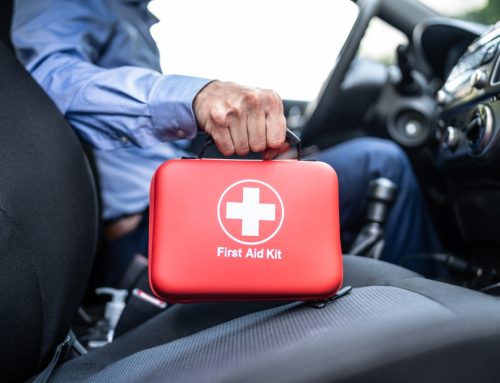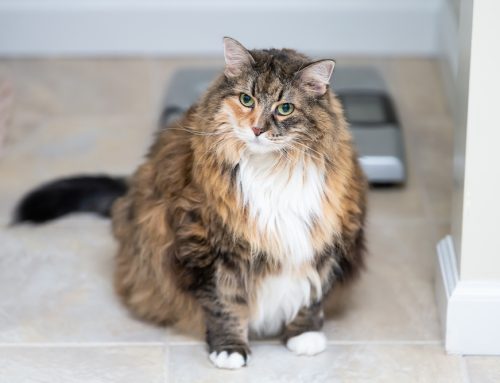You are taking your new puppy to visit your friend, and realize that you have forgotten to bring their “puppy peanut butter” to stuff their Kong. However, you figure your friend’s peanut butter will do in a pinch, and ask for a dollop. As you scoop out a spoonful, your friend starts telling you about how her keto diet has been going so well since she switched to sugar-free products. A warning bell goes off in your head, and you glance at the peanut butter label, quickly spotting the sugar-free indicator. You check the ingredients list, and search for xylitol, a common sugar substitute. When you see the ingredient listed, you scoop out the peanut butter and thoroughly wash your puppy’s Kong. You explain to your friend that xylitol is an excellent sugar substitute for humans, but can be deadly to dogs.
Unfortunately, such scenarios are common, and not all end without disaster. In fact, the ASPCA Animal Poison Control Center (APCC) fielded phone calls from worried pet owners about 320,350 items their pets were exposed to in 2021. As a food item, xylitol ranked number three on the list of most common pet toxins, and every dog owner needs to know about the substance. Our Southern Arizona Veterinary Specialty & Emergency Center team wants to share important information about xylitol toxicity with you, so you can best protect your pet from poisoning.
Where can pets be exposed to xylitol?
Most commonly, xylitol is used as a sweet substitute for sugar. With a low glycemic index and fewer calories than regular sugar, you will likely find xylitol in many “sugar-free” foods, including:
- Sugar-free gum and candies
- Breath mints
- Peanut butter
- Baked goods
- Desserts
- Pudding
- Jello
If you are handed a sweet treat claimed to be sugar-free, check whether xylitol is the sugar substitute. This will let you know if the item is toxic to your pet.
In addition to foods typically sweetened with sugar, xylitol is used as a sugar substitute in medicinal products. You may find xylitol listed in the ingredients in a wide range of health care products—whether they are edible or not—including:
- Cough syrup
- Chewable vitamins
- Supplements
- Over-the-counter medications
- Mouthwash
- Toothpaste
- Nasal sprays
- Skin care products
- Laxatives
- Digestive aids
- Allergy medicines
- Dry mouth lozenges
- Prescription medications
While xylitol in itself is dangerous for pets, the other ingredients found in many of these products can also pose a threat. To protect your four-legged friend from sugar-free and other dangers, keep medicinal products and foods well out of your pet’s reach.
How does xylitol affect pets?
Xylitol is unique in that the substance affects only dogs. People can safely eat xylitol, although too much can create a laxative effect. Cats do not appear to react negatively to xylitol ingestion.
If your dog ingests xylitol, they can experience a rapid decline in blood sugar, and may also suffer liver damage. Xylitol stimulates the pancreas to release insulin, the hormone responsible for transporting glucose from the bloodstream into the cells for energy use. When insulin levels surge, they push too much glucose into the cells, leaving the dog’s blood sugar level dangerously depleted. In addition to overstimulating the pancreas and harming the liver, xylitol can cause a decrease in potassium and phosphate levels, which are important substances for a variety of bodily functions.
What xylitol toxicity signs might I see in my dog?
In most cases, xylitol toxicity signs develop rapidly, often 15 to 30 minutes after ingestion. However, some products, such as medications, have a slow-release action, so toxicity signs can be delayed. And, since dogs can develop hypoglycemia, liver damage, or a combination of the two, they may show a variety of signs.
If your dog’s blood sugar drops after xylitol ingestion, you may see:
- Vomiting
- Weakness
- Drowsiness
- Difficulty walking or standing
- Lack of coordination
- Rapid heart rate
- Tremors
- Collapse
- Seizures
- Coma
If your dog develops liver damage, you may not notice signs for a few days. While your pet is hospitalized for xylitol ingestion, we’ll monitor them for liver disease signs, which can include:
- Diarrhea
- Spontaneous bleeding
- Unexplained bruising
- Vomiting
- Yellowing of the skin and the whites of the eyes (i.e., jaundice)
How is xylitol toxicity in dogs treated?

Supportive nursing care is the key to xylitol toxicity treatment. If a brief period of time has passed since your dog ingested xylitol, and no clinical signs have appeared, we will induce vomiting to eliminate as much of the substance as possible. However, since signs tend to occur quickly, we move on to management.
In most cases, a dog who ingested xylitol will require intravenous (IV) fluid therapy, along with IV dextrose administration to correct glucose, potassium, and phosphorus levels. Liver protectants, along with vitamin K administration, may also be part of the treatment plan. If a severe clotting problem develops, blood transfusions may be needed. Whatever the case, your dog will remain hospitalized until their liver is functioning normally, and their blood glucose remains at an ideal level.
With urgent care or emergency services available at our two locations, your pet doesn’t need to suffer from potential poisoning. If you suspect your pet ate a xylitol-containing product, contact our Southern Arizona Veterinary Specialty & Emergency Center central location or east side location immediately.








Leave A Comment